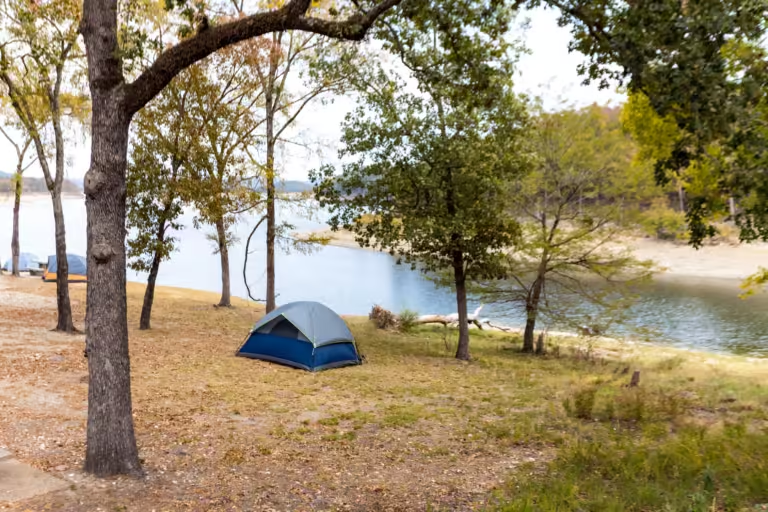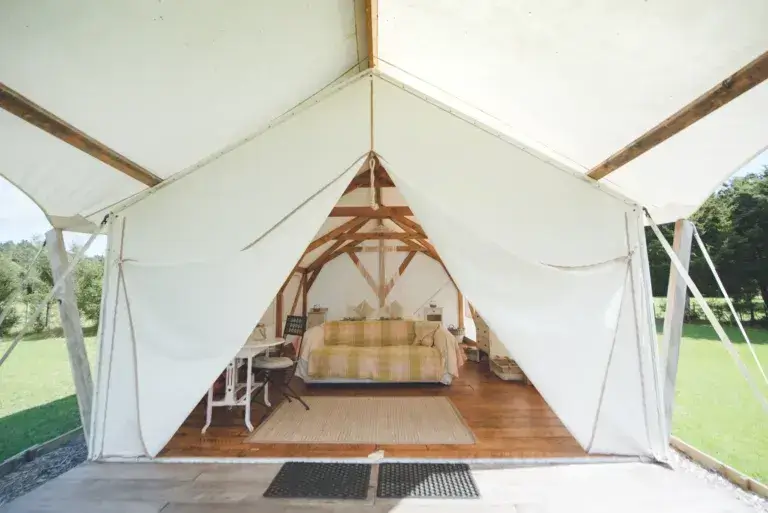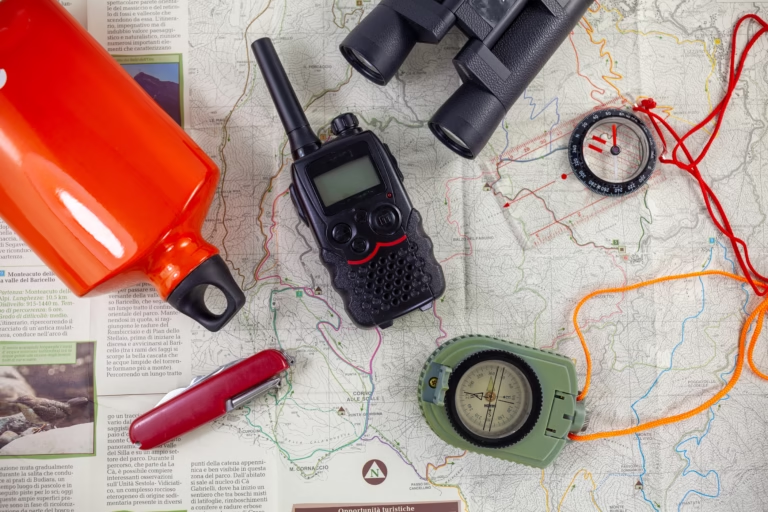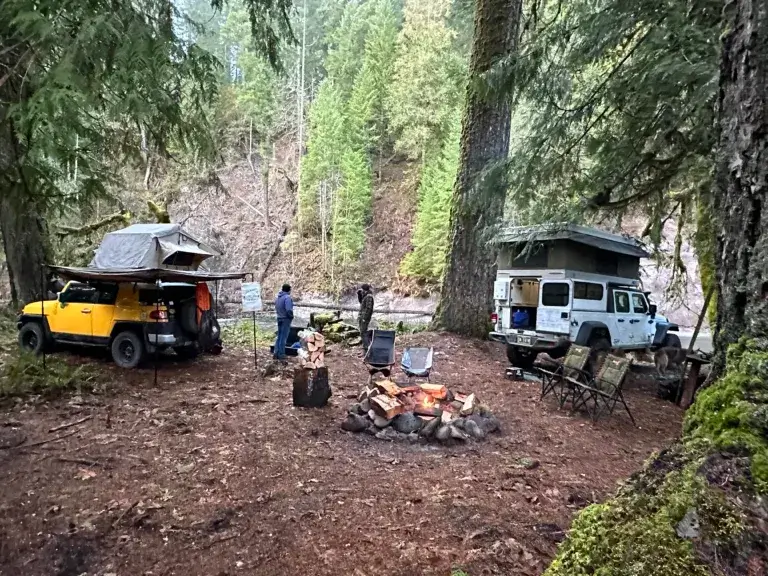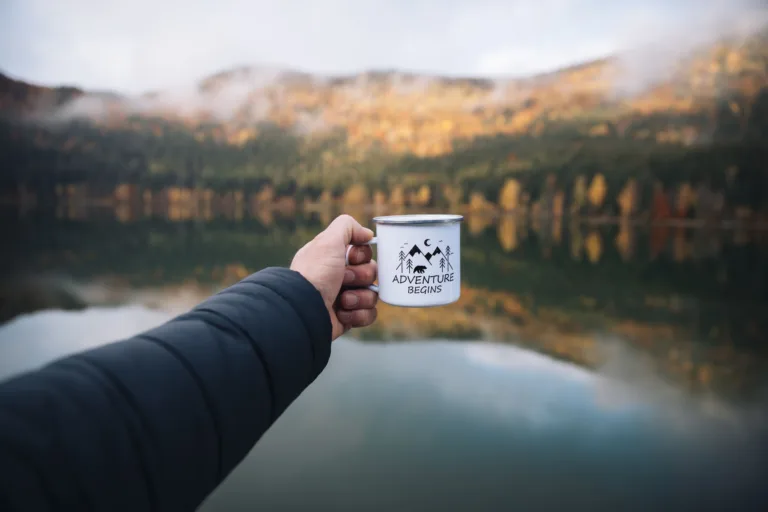Best Dispersed Camping in Oregon: My Favorite Hidden Spots and How You Can Enjoy Them Too
There’s just something about wandering into the Oregon wilds and claiming a quiet little patch of earth for the night.
Dispersed camping gives us that rare taste of freedom – no crowded campgrounds, just us, the trees, and a sky full of stars.
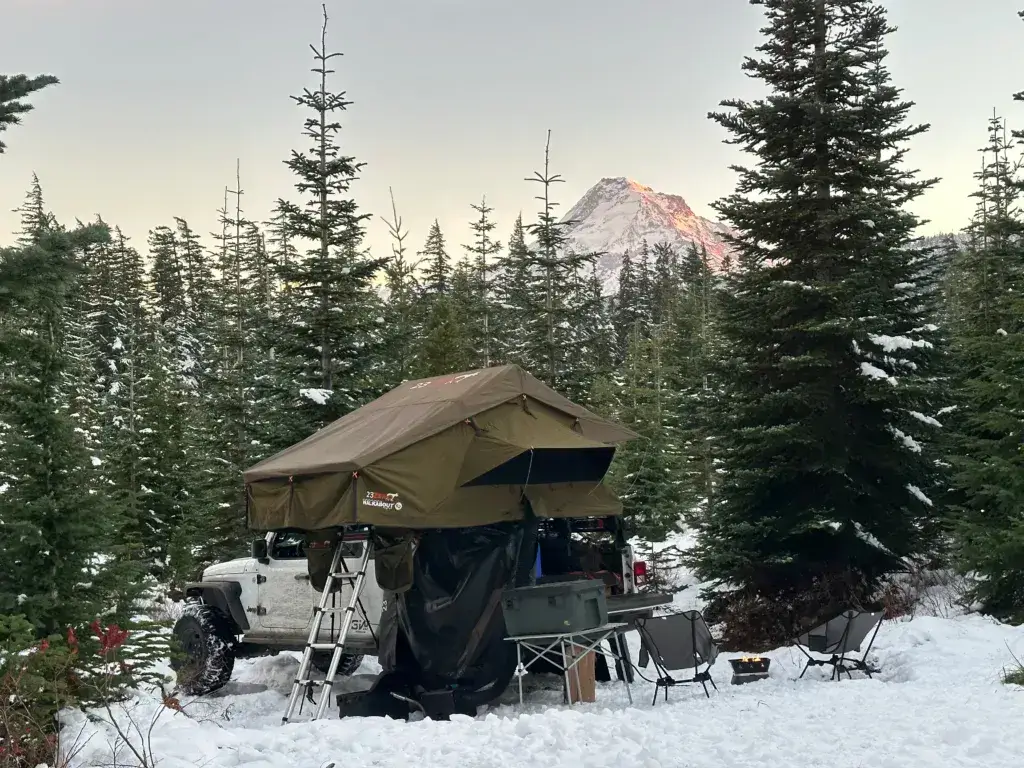
We’ve spent years wandering around Oregon, going up and down forest roads, searching for hidden treasures, and have pinned many, many dispersed camping spots.
While we’re not going to give away all of our secrets here! We’d love to share some of our favorite areas to help others find the best dispersed camping spots in Oregon.
Disclosure: This post contains affiliate links and might earn us a small commission if you make a purchase at absolutely no extra cost to you.
1) Mount Hood National Forest for epic mountain views and tons of trails
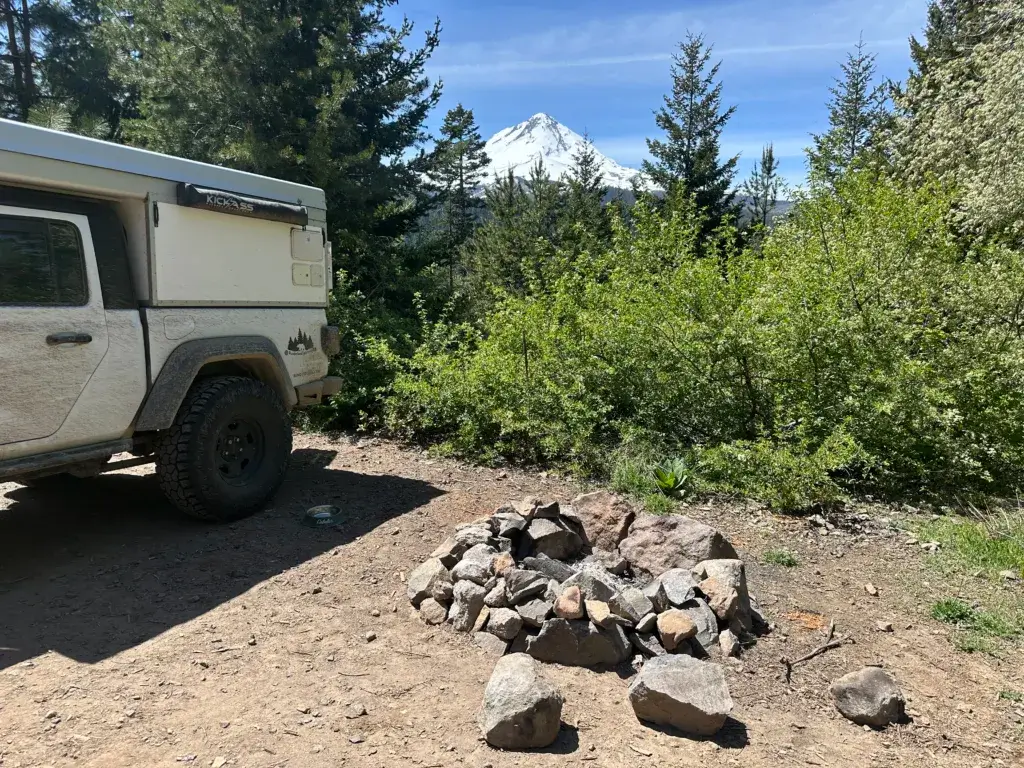
If you’re after a view, Mount Hood National Forest is calling. There’s nothing like that first light hitting Mount Hood’s snowy peak while you’re sipping coffee from your sleeping bag.
There are tons of secluded spots along forest service roads, so there’s no shortage of privacy if you know where to look. Hiking trails start right from many campsites, so it’s easy to lace up your boots and wander if hiking is your thing. You may just discover a hidden lake or a field of wildflowers.
Weekends get busy, so showing up early or picking a lesser-known road can make all the difference. Don’t forget: these sites are pack-it-in, pack-it-out. I can’t tell you how many times we’ve arrived at a dispersed spot only to find it littered with garbage. SAD. And the reason why we’re not giving up our favorite spots!
The forest stays beautiful if we all pitch in.
Want more ideas? Check out reviews for dispersed camping near Mount Hood National Forest – there’s some gold in there.
Here are a couple of our favorite areas to explore:
Lolo Pass Road (NF-18): Multiple dispersed sites with views of Mount Hood.
Trillium Lake Vicinity (NF-2656): Some dispersed pull-outs, though they can fill fast in summer (Beyond the Tent).
2) Tillamook State Forest if you have a 4WD for those serene forest spots
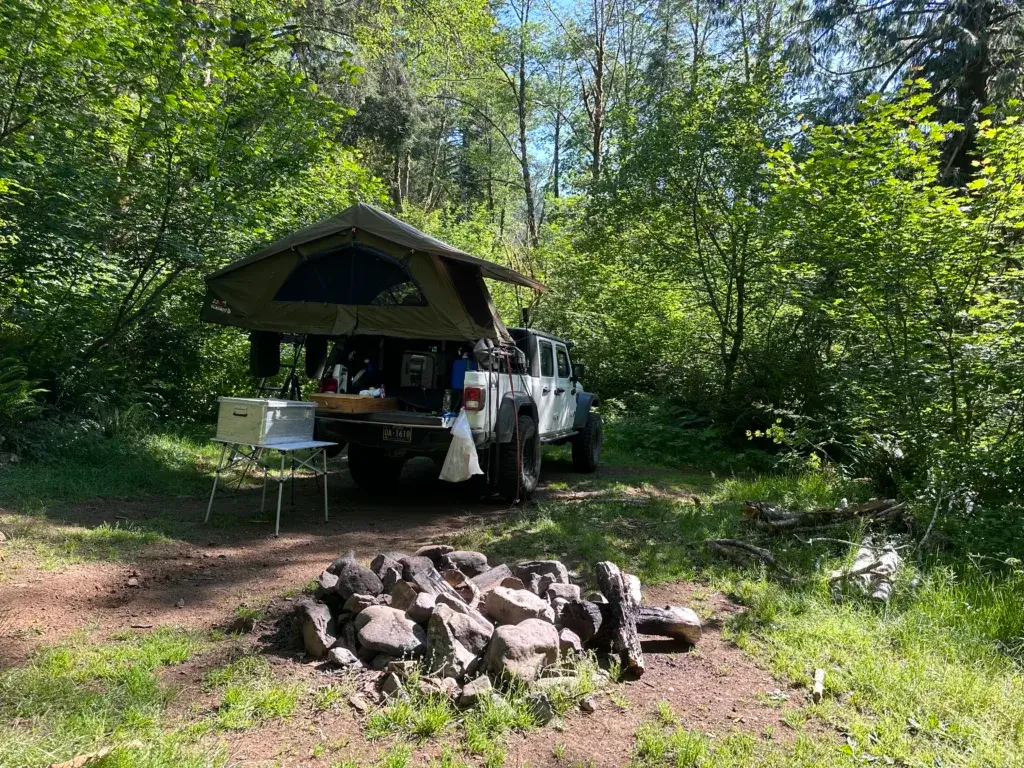
If you’re after wild, quiet places, Tillamook State Forest is a solid bet. It sprawls just west of Portland, and you can find free dispersed camping under the tall trees.
If you have a 4WD, use it! Some of the best spots hide down rougher roads.
With 250+ miles of off-highway trails, you can explore by quad, dirt bike, or just wander on foot. And on clear nights? The stars are unreal – don’t forget to look up.
You can camp up to 14 days, so there’s time to really relax. Need directions or rules? The Tillamook Forest Center is just a call away.
A couple of our favorite areas to explore:
Cook Creek Road (NF-1050): This is a well-known dispersed camping road, but it’s narrow and best for smaller vehicles.
Nehalem River Area: Forest roads along the Nehalem River offer pull-outs and riverside camping, but access can be rough and may require a high-clearance vehicle.
3) Crater Lake area for stunning lakeside dispersed camping
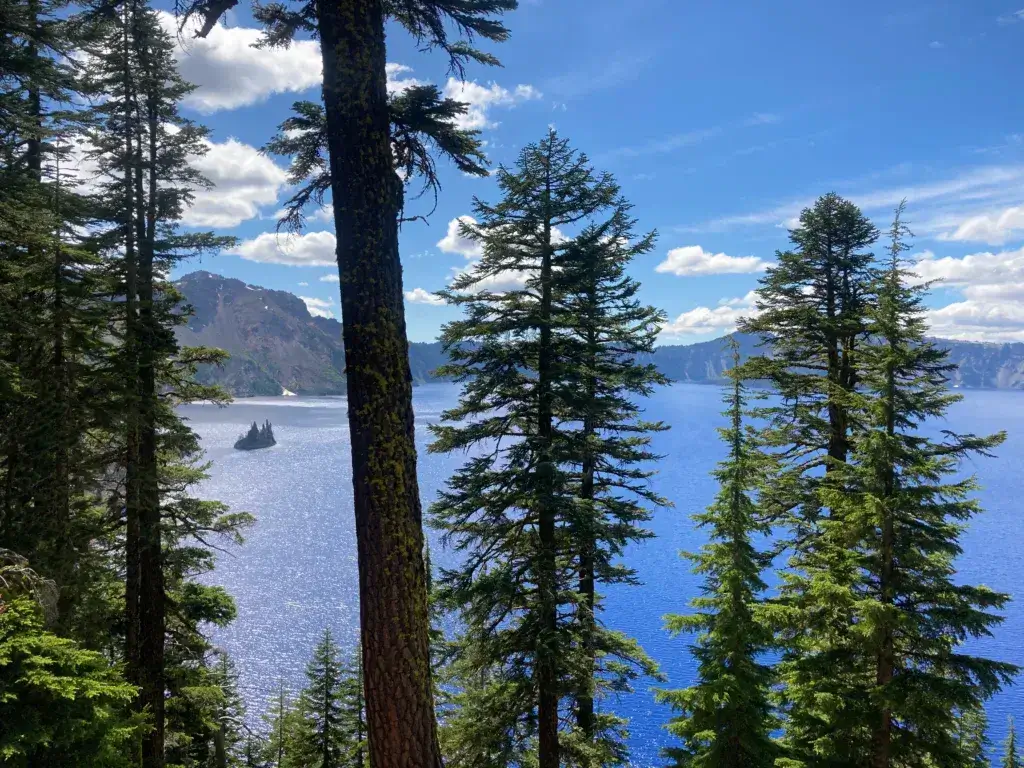
Want to wake up somewhere that’ll blow your mind? The Crater Lake area is the place.
Look for dispersed camping spots just outside the park – Forest Road 70 off Highway 138 is a favorite. You’ll sleep among pines and have easy park access in the morning. I
f you want even more solitude, check out Mount Thielsen Wilderness nearby.
Camping inside Crater Lake National Park has strict rules. You’ll need to be at least a mile from any road or developed area if you want to pitch a tent.
Always pack out your trash and leave the place just as wild as you found it. And if you find trash when you get there, as annoying as it is, clean it up for the next person.
Here’s a handy guide to dispersed camping near Crater Lake if you need more info.
One of our favorite nearby areas:
Winema National Forest, near Slocum Creek: Dispersed sites along NF-60 and NF-62, within 30 minutes of the park entrance.
4) Ochoco National Forest for a quieter, less crowded experience
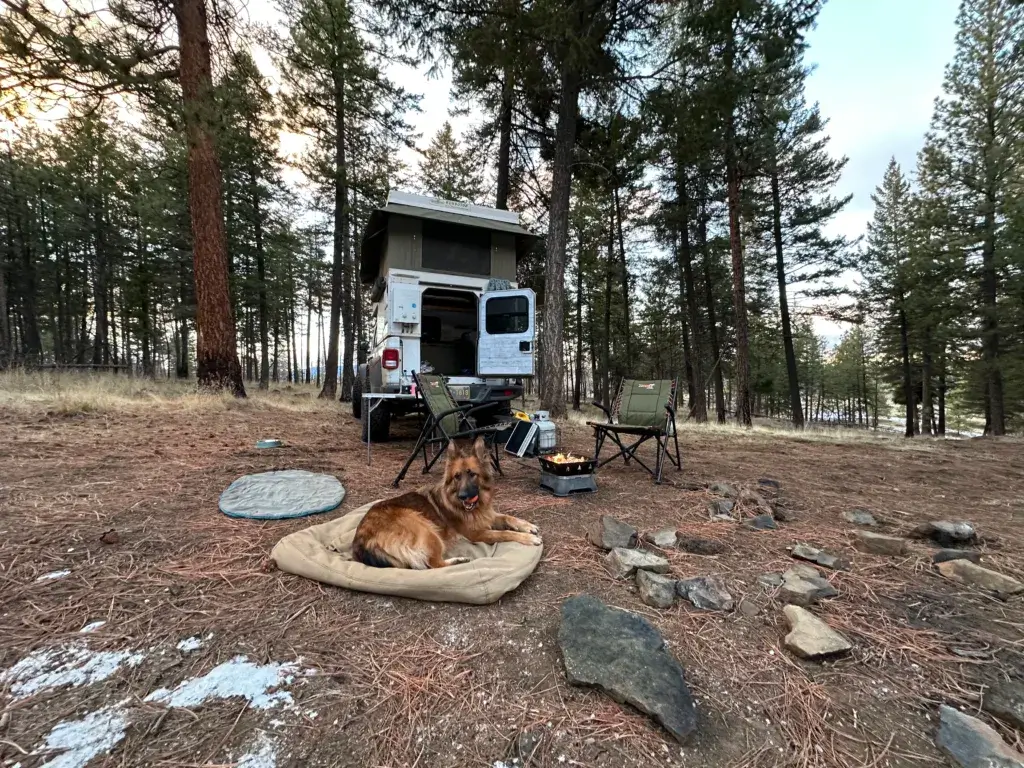
If you want to feel like you have the whole forest to yourself, head to Ochoco National Forest. It’s tucked away in central Oregon, so you’re less likely to bump into crowds.
Here, you can really spread out and soak up the calm. Wide meadows, tall pines, and endless views – it’s the kind of place that slows you down in the best way.
There are tons of dispersed camping options in Ochoco, so you can pick a spot by a creek or deep in the woods. Hiking’s a big draw, too, with trails for every mood.
We even saw wild horses running free…. it’s something I’ll never forget.
The stars are crazy here. Makes you feel so small.
Services are pretty much nonexistent, so bring what you need and enjoy the peace.
A favorite area to check out:
Walton Lake Vicinity: Forest roads like NF-22 and NF-4210 offer quiet, wooded sites.
5) Wallowa-Whitman National Forest with beautiful mountain scenery
Wallowa-Whitman National Forest… the mountains here seem to go on forever, and the air feels a little cleaner with every breath.
This place is massive – 2.4 million acres, give or take – so there’s room to find your own slice of Oregon wilderness. Dispersed camping here feels like a secret only a few of us know about.
Pitch your tent by a creek, or pull off along a quiet dirt road. If you’re near La Grande, check out the Spring Creek Dispersed Area – it’s free, right off I-84, and managed by the Forest Service.
It’s easy to get lost (in a good way) among the pines and mountains. Don’t forget to plan ahead and follow Leave No Trace.
For more ideas, here’s a guide to dispersed camping near Wallowa-Whitman National Forest.
6) Umpqua National Forest’s diverse spots for a mix of forest and river views
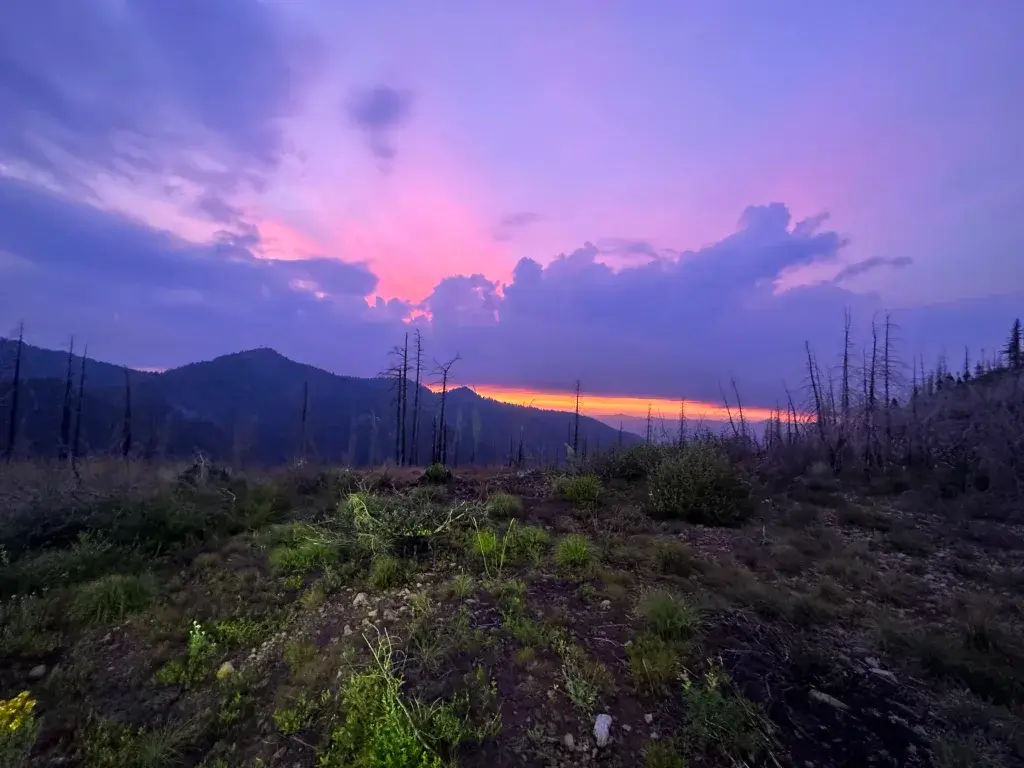
The Umpqua National Forest is a gem for dispersed camping. You get thick woods, clear rivers, and peaceful meadows, all in one place. There’s a campsite for every mood here.
Some spots let you camp right by the North Umpqua River, so you can start your day with the sound of water and maybe a little mist rising through the trees. Other sites tuck you under massive firs and hemlocks, making it feel like your own private forest retreat.
It pays to be prepared out here. Most sites are totally wild – no bathrooms, no trash cans, and sometimes a whole lot of mosquitoes.
Bring everything you need, especially bug spray and water. But hey, that’s part of the adventure in Umpqua National Forest.
Our favorite areas:
Lemolo Lake Area: Forest roads around Lemolo Lake (like NF-2612) offer several pull-offs for dispersed camping. You’ll be close to the lake and waterfalls.
Toketee Lake: Look for sites along Toketee-Rigdon Road (NF-34). These are near hot springs and the North Umpqua River.
7) Rogue River-Siskiyou National Forest for peaceful river access
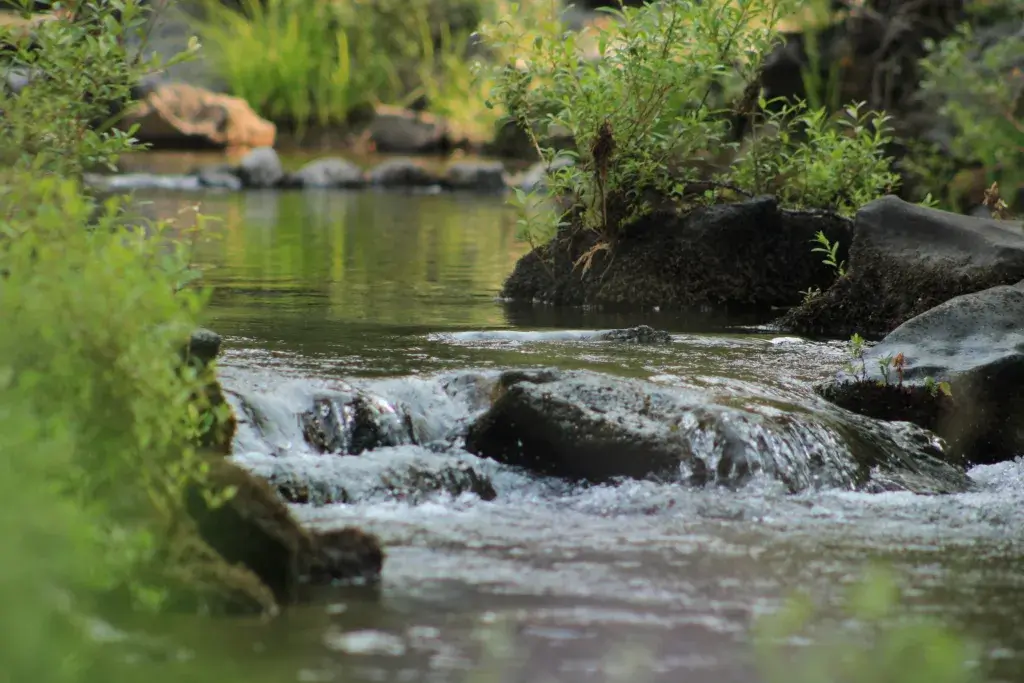
Let’s talk about the Rogue River-Siskiyou National Forest. We’ve stumbled on many little hideaways right by the water, where the river’s sound melts away the week’s stress.
These spots feel private but don’t require a crazy trek. Exploring the pull-offs along the Elk River is one of our favorite things – many are close enough to the shore for dipping toes or tossing in a fishing line.
Falling asleep to the sound of the current rushing just outside the tent… top notch. The forest invites us in for a real break from screens and all the noise.
Camping here is super casual, usually just us, our gear, and the hush of the trees. If you want more info, check out this guide to dispersed camping near Rogue River-Siskiyou National Forest or read about Elk River dispersed campsites.
Check out this area:
Bear Camp Road: Several pullouts and clearings are available for dispersed camping, especially popular with rafters and hikers.
8) Steens Mountain for a unique high desert camping vibe
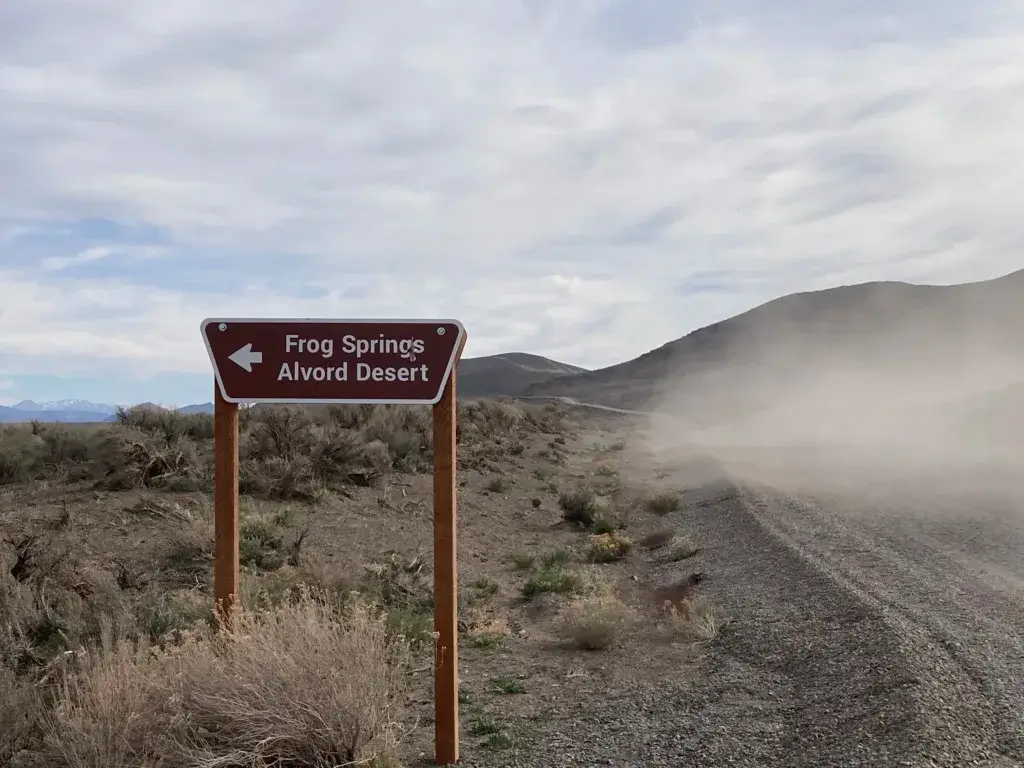
Steens Mountain is great for wide-open skies and a good dose of real quiet. The landscape is wild, rugged mountains, high desert, and a peace that’s tough to find elsewhere in Oregon.
Dispersed camping is allowed all over Steens so finding a good spot is pretty easy. Just remember to pack in what you need, and definitely pack out everything when you leave.
Getting here takes some effort, especially if you’re driving the Steens Mountain Loop Road. The road can get pretty rough, so a high-clearance vehicle or four-wheel drive is a huge help, but you can still reach plenty of great spots in a regular car if you go slow. There’s a helpful guide here if you want more info.
Whether we’re chilling near Page Springs Campground or heading deeper into the wild, Steens Mountain always feels like our own private adventure.
9) Deschutes National Forest offering great spots near the Cascade Range
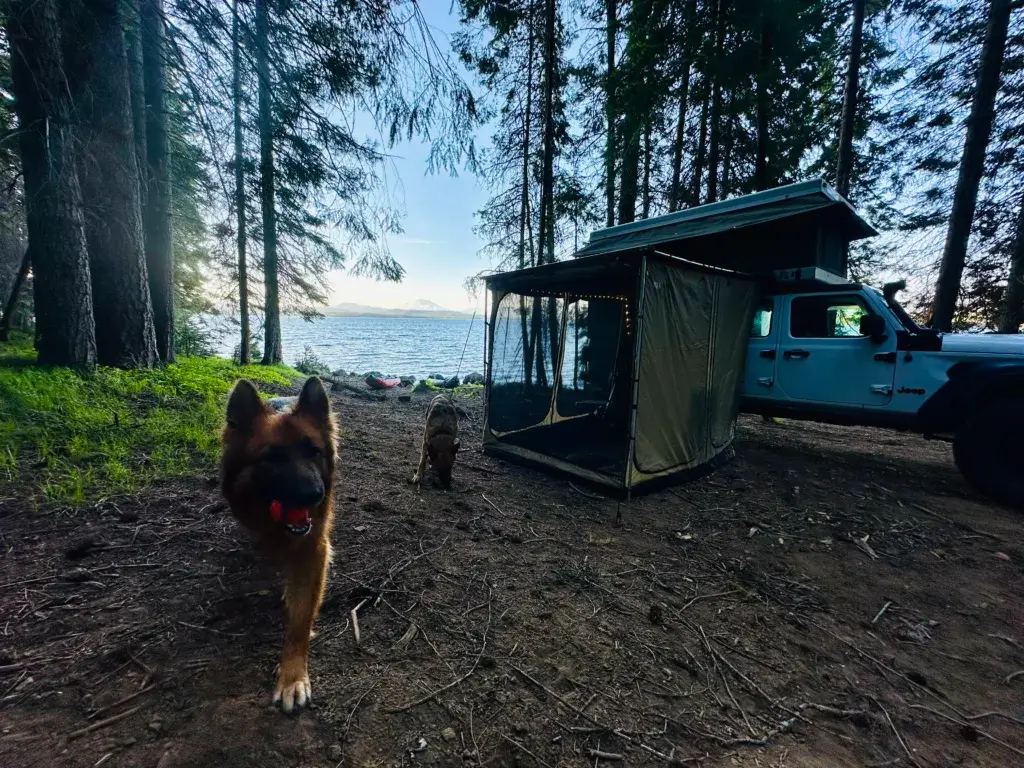
If you want peaceful wilderness and big mountain views, Deschutes National Forest is a solid bet. There’s so much space to spread out, it’s easy to find a quiet corner away from the crowds. (It can get busy here, especially in the summer.)
There are miles of forest roads and pull-offs, especially in the quieter areas, so privacy is easy to find. Views of the Cascades are all over the place.
There are many hidden mountain lakes and creeks. After a day of hiking or paddling, settling down under the pines is amazing.
Again, just remember the basic dispersed camping rules: pack out what you bring, and don’t camp too close to streams or meadows.
The forest is famous for its free dispersed camping options. Let’s keep it beautiful for everyone by doing our part.
Waking up to crisp mountain air, knowing the whole day is yours to explore? That’s Deschutes. Whether you’re hiking, paddling, or unplugging, there’s always something new to discover.
We spend a lot of time here; our favorite areas are below:
- Cascade Lakes Highway: Try Forest Roads 4635 or 4600-370 near Hosmer Lake for classic high-mountain camping among pines and lakes.
- China Hat Road: Head southeast of Bend on FR 18 and explore the many spur roads for easy-access dispersed camping in the open pine forest. *** UPDATE*** Currently closed for county maintenance – a reopen date is not yet available as of summer 2025.
10) Willamette National Forest if you want lush green landscapes
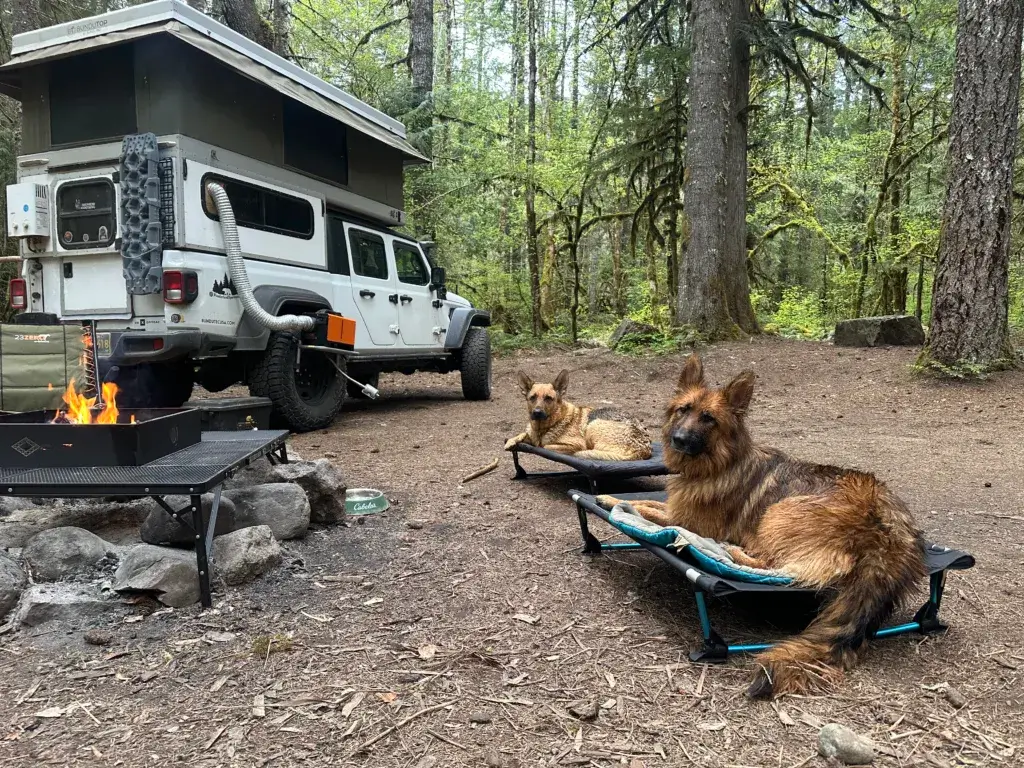
If you’re after the true Pacific Northwest vibe, Willamette National Forest is a must. Think tall trees, mossy trails, and streams that sneak up on you when you least expect it.
You know those scenic, misty, PNW reels you see on Instagram? Yep, the Willamette National Forest is a great place to find them. Waking up to mist drifting through the trees is something I’ll never get tired of.
You can pick almost any spot outside a developed campground and just settle in. There’s loads of room to spread out and enjoy the quiet, plus plenty of places near water or hiking trails.
The forest is huge, so crowds are rarely a worry, and the air always smells ridiculously fresh. If you’re new to dispersed camping, remember to pack some extra layers because it gets chilly at night.
Oh yeah, and Leave No Trace. Leave it better than you found it.
Need more tips or want to know where to start? Check out dispersed camping near Willamette National Forest.
Check out these areas:
Forest Road 19 (Aufderheide Drive): Numerous riverside dispersed sites, especially near Cougar Reservoir and Box Canyon.
McKenzie River Corridor: Look for pullouts along NF-2600, but stay at least 100 feet from water sources as required by forest rules.
11) Painted Hills Dispersed Camping
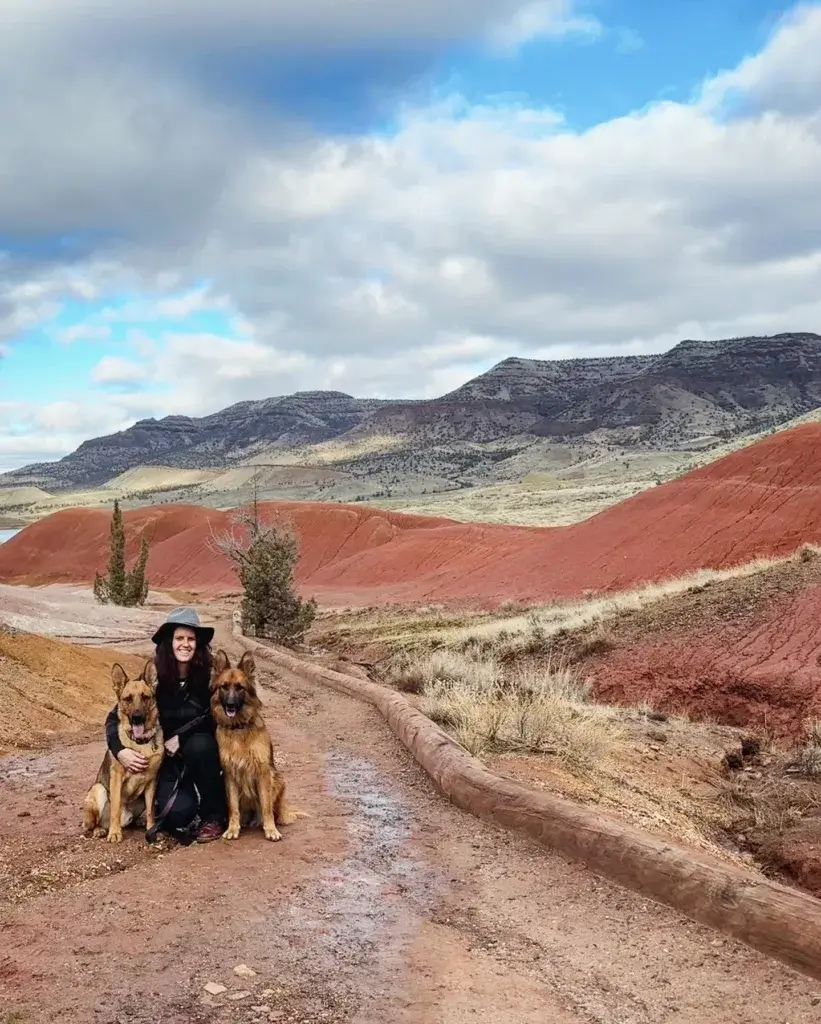
The Painted Hills in Oregon are just wild. The colorful clay hills are jaw-dropping, and camping nearby means you wake up to a view that doesn’t even feel real.
A great trail in the area to explore in the area is the Carroll Rim Trail. The stars over the hills at night will blow your mind.
Painted Hills
- Priest Hole Recreation Site: A well-known BLM dispersed site along the John Day River
12) Owyhee River Dispersed Camping
The Owyhee River in southeast Oregon is the ultimate in remote camping. The river winds through red rock canyons and cliffs that make you feel like you’ve landed on another planet.
We’ve found peaceful campsites right on the riverbank. The desert views and total solitude are incredible.
Owyhee River
- Three Forks Recreation Site: Remote, riverside dispersed camping with GPS: 42.5915, -117.1831 (Camino Adventures).
12) The Oregon Coast
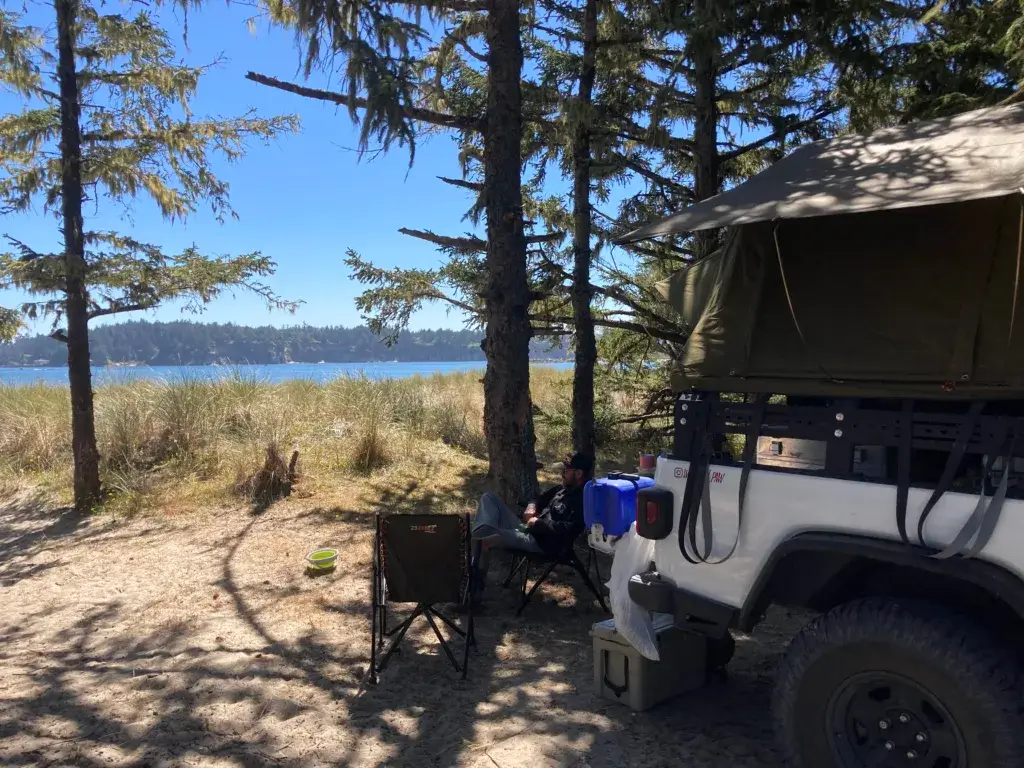
Dispersed camping directly on the Oregon Coast is pretty limited because much of the land is state park, private property, or environmentally protected. However, we’ve found a handful of excellent free or nearly-free spots where camping is allowed nearby.
Here are some of the top dispersed camping areas along the Oregon Coast:
North & Central Coast
- Tillamook State Forest (Trask River & Nehalem River areas)
- Free dispersed sites along forest roads and rivers.
- Great for fishing, hiking, and close to the coast.
- First-come, first-served.
- Drift Creek / Siuslaw National Forest (near Lincoln City & Waldport)
- Forest service roads with pullouts for free camping.
- Quiet, wooded areas within 20–30 minutes of the beach.
- South Jetty Dispersed Area (Florence)
- Part of Oregon Dunes National Recreation Area.
- Open sand camping (with permit).
- Popular with off-road vehicles, so expect some noise.
South Coast
- Bastendorff Beach County Park (near Coos Bay)
- Technically a county park, but offers very cheap or free overnight options.
- Right on the beach with picnic areas and ocean views (source: Hippo Haven).
- Horsfall Beach Dispersed Camping (North Bend / Coos Bay)
- Part of the Oregon Dunes NRA.
- Open sand camping with ocean access.
- Permit required, but inexpensive.
- Gold Beach / Rogue River–Siskiyou National Forest pullouts
- Dispersed sites along forest service roads just inland from Gold Beach.
- Quiet, wooded, and close to the Rogue River.
- Humbug Mountain State Park (near Port Orford – cheap option)
- The official campground charges, but free dispersed spots are available on forest roads nearby.
Understanding Dispersed Camping in Oregon
Understanding how dispersed camping works in Oregon makes everything go smoother. Packing the right gear keeps the trip safe, comfy, and easy on the environment.
The Basics: What to Expect
Dispersed camping in Oregon means camping for free outside developed campgrounds, mostly on national forest or BLM land. There aren’t any set campsites, just you, your tent, and the wild around you.
No running water, no restrooms, no trash bins. Always, always, always, always, ALWAYS pack out garbage and follow Leave No Trace.
Finding a flat, safe spot is half the fun. Always check local rules, fire bans, and road conditions before you head out.
The TMBtent Guide and The Dyrt’s listings have updated info on regulations and good campsites. Cell signal is spotty, so downloading maps in advance is a good idea.
Essential Gear and Supplies for Your Trip
Packing right really matters. Here’s what we always toss in the car:
- Sleeping gear: a warm sleeping bag, a sleeping pad, and a tent that can handle some wind. Maybe rain, depending on the time of year.
- Cooking supplies: portable stove, fuel, cookware, and food (skip the campfire if there’s a ban!)
- Water: a few gallons or a solid filter, streams aren’t always reliable
- Navigation: offline maps, compass, or GPS, since trails aren’t marked
- First aid kit: for scrapes, bumps, and the unexpected
- Clothes: layers for Oregon’s moody weather, rain gear, and a warm hat. I always bring extra socks.
Don’t forget trash bags, a trowel for digging a cat hole, and a headlamp for those pitch-black nights.
There are some great apps out there, like freecampsites.net or The Dyrt, to scout new spots. We also just pull up Google Maps and start looking at forest roads, we’ve found so many great spots this way. OnX and Gaia Maps are great too.
Find Hidden Campsites with the ONX Offroad App
One of the best tools we’ve found for dispersed camping in Oregon is the ONX Offroad app. Unlike regular map apps, ONX is built for exploring backroads and public lands. It shows you exactly where national forest and BLM land boundaries are, so you’ll know where you can legally camp for free.
Why we love it for dispersed camping:
- Offline maps: Download maps before you lose service so you’re never stuck without directions.
- Land ownership info: See which roads and pullouts are on public land (so you know you’re allowed to camp there).
- Trail & road details: Perfect if you’re bringing a 4WD, dirt bike, or just want to know what kind of road you’re getting into.
- Waypoint marking: Save your favorite hidden spots so you can return later.
We’ve discovered some of our favorite tucked-away campsites using ONX. If you’re serious about dispersed camping in Oregon, it’s worth having in your toolkit.
👉 Try ONX Offroad here and start finding your next hidden camping spot.
Tips for a Safe and Enjoyable Adventure
We all want to come home from camping feeling refreshed, maybe a little braver, and more in tune with Oregon’s wild places. How we treat the land and find our way through the trees matters – a little extra care goes a long way.
Leave No Trace: Respect Nature & Wildlife
When we’re dispersed camping, we do our best to keep Oregon’s beauty intact. Following Leave No Trace is the name of the game. We always pack out every bit of trash, even little food wrappers, so critters don’t get curious and the place stays wild.
If we build a campfire, stick to existing fire rings. During fire season, always double-check for restrictions and stick to Oregon’s campfire rules. Washing up? We steer clear of lakes and streams, and use biodegradable soap at least 200 feet from water.
Wildlife is best enjoyed from a distance. It’s tempting to get close, but feeding or bothering animals throws off the balance. Let’s leave everything as we found it – or even better for the next folks. Sharing is caring.
Navigating Oregon’s Unique Landscapes
Oregon’s landscapes are all over the place, in the best way. Finding our way isn’t always simple, so we like to bring a paper map and compass just in case, cell service is pretty unreliable in the best camping spots.
Even if we find a spot in advance by using an app or looking at maps, once we’re out there, old-school navigation is gold. Plus, the spot may already be occupied and you’re out in the middle of nowhere with no Plan B.
The weather can flip fast, especially in the mountains, so we always pack layers, rain gear, and plenty of water.
Forest roads can get gnarly; a high-clearance vehicle sometimes saves the day. We tell someone where we’re headed before we head out; it’s a small thing, but gives everyone peace of mind.
Every spot can have its own quirks, so we always check the rules for each forest. Knowing the area ahead of time makes things safer and more fun.
Frequently Asked Questions
Dispersed camping in Oregon is a bit like a treasure hunt. With a little guidance, we can unlock so many beautiful places – from rugged coastlines to quiet forests. It’s all about knowing the rules, being prepared, and loving the adventure, even if you forget the marshmallows.
What are the top spots for dispersed camping along the Oregon Coast?
Dispersed camping directly on the Oregon Coast is limited, but you’ll find great free spots just inland in places like Tillamook State Forest, Siuslaw National Forest, and near the Oregon Dunes. Popular areas include South Jetty near Florence, Horsfall Beach by Coos Bay, and forest pullouts around Gold Beach – offering a mix of quiet woods and sandy beach camping.
Can you boondock freely in Oregon’s national forests?
Most of the time, you can boondock without much hassle in Oregon’s national forests. Mount Hood National Forest and Ochoco National Forest are pretty welcoming, lots of spots where you can park and camp for free, as long as you’re not blocking anything or trashing the place.
The trick is to stick to spots that look established, clean up after yourself, and keep an eye on local fire restrictions. Follow the rules on how long you can stay – most places it’s 14 days.
It’s not rocket science, but it does make a difference.
How do you locate the perfect dispersed campsite in Oregon’s vast wilderness?
We usually start by checking out forest service maps or apps like The Dyrt. These tools can point you to those lesser-known pullouts and old forest roads where camping’s allowed.
Chatting with rangers or swapping stories with other campers sometimes leads us to hidden gems we’d never find otherwise. When we finally roll up, we look for flat, already-used spaces to keep our impact low. No one wants to be “that camper” who leaves a mess or flattens a meadow.
What should you know about dispersed camping in the Tillamook State Forest?
Tillamook State Forest lets you camp year-round, no permit required. We’ve noticed that the best campsites are usually down narrow, bumpy roads, so having a high-clearance vehicle or 4WD really helps.
We always follow the Oregon Department of Forestry guidelines to keep things safe and tidy. Water can be a pain to find out there, so we pack in plenty. And, yeah, don’t forget a trowel for, well, you know – nature calls.
Are there any prime locations for RV-friendly dispersed camping in Oregon?
If you’re rolling in an RV, check out areas near Mount Hood and Wallowa-Whitman National Forest. Some forest roads stay wide and flat enough for bigger rigs, so you won’t have to squeeze through tight spots.
We always scout ahead, either in person or with camping apps, just to make sure the spots aren’t too sketchy for our setup. Nothing ruins a trip faster than getting stuck or finding out you can’t level out your home on wheels.
What are the latest regulations for dispersed camping in Oregon?
Dispersed camping rules in Oregon? They shift around, especially when fire season hits or storms roll through. Most spots let you stay up to 14 days, and you gotta keep your tent at least 200 feet from any water source.
No permits or fees right now in state forests, which is great. Still, it’s smart to peek at the official guidelines before you toss your gear in the car.
We’ve all gotta keep an eye on campfire bans, and yeah, packing out your trash isn’t optional. Just check for any posted signs, sometimes the rules change overnight.
Honestly, a little effort goes a long way. If we all pitch in, these wild places stay awesome for the next trip.


